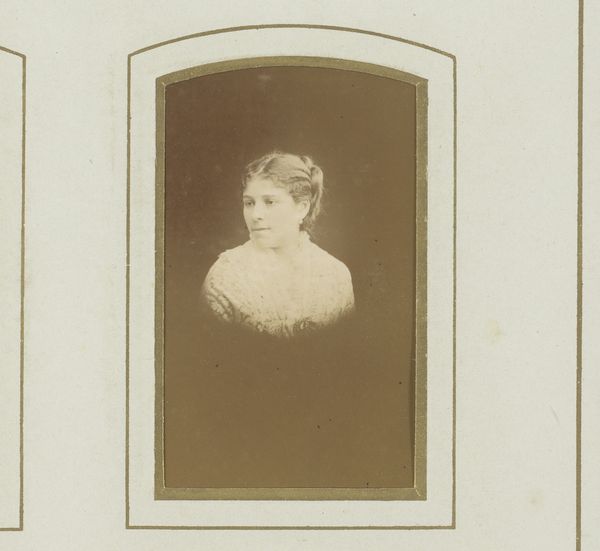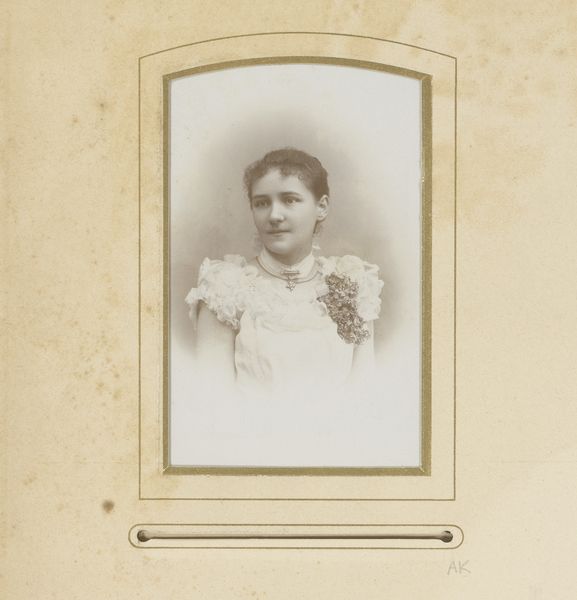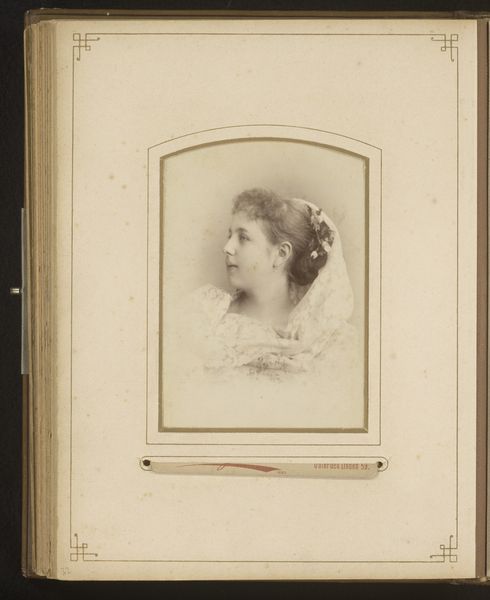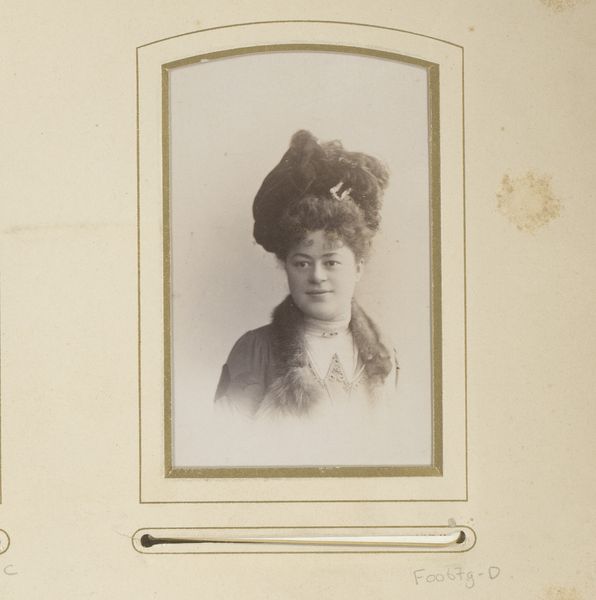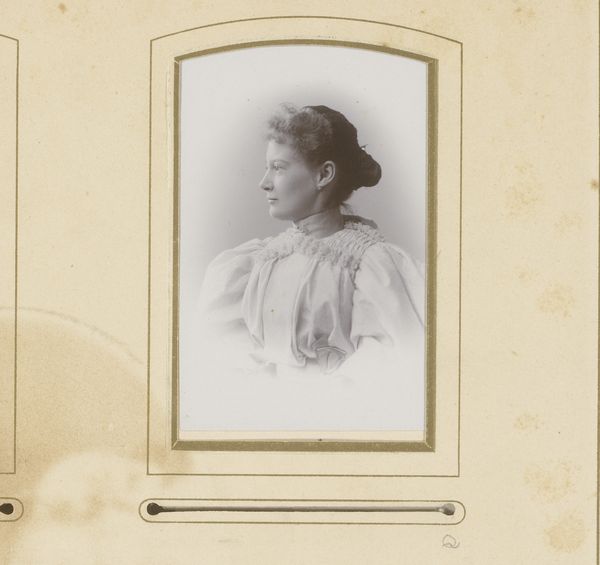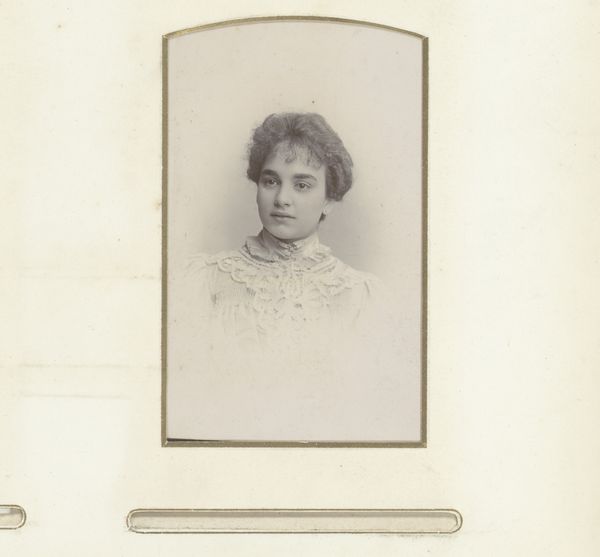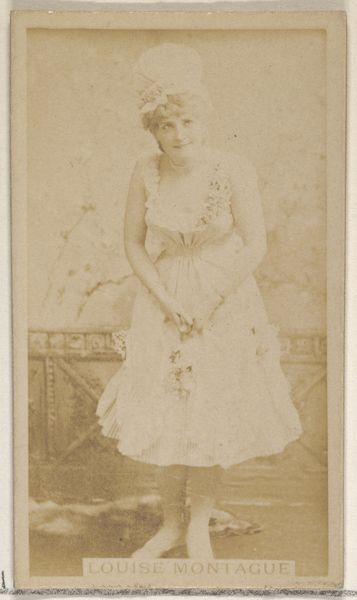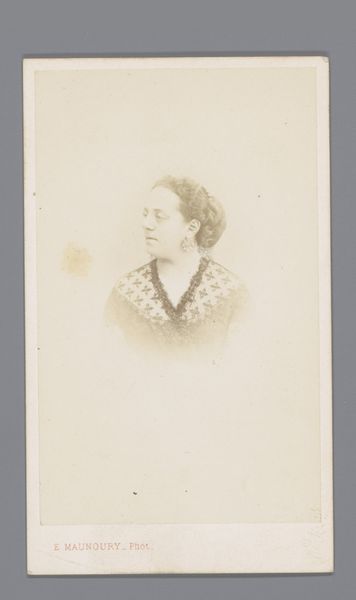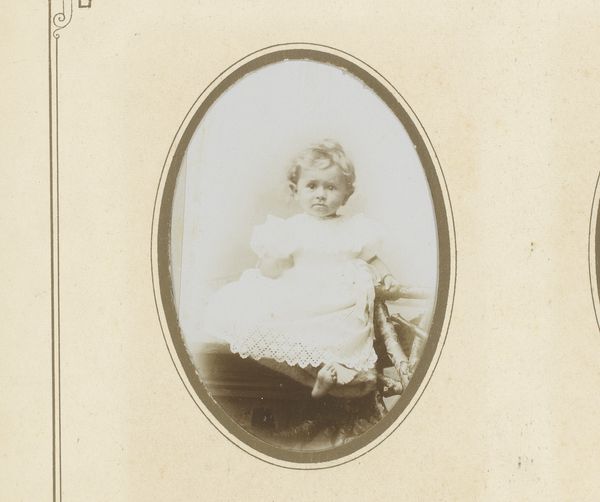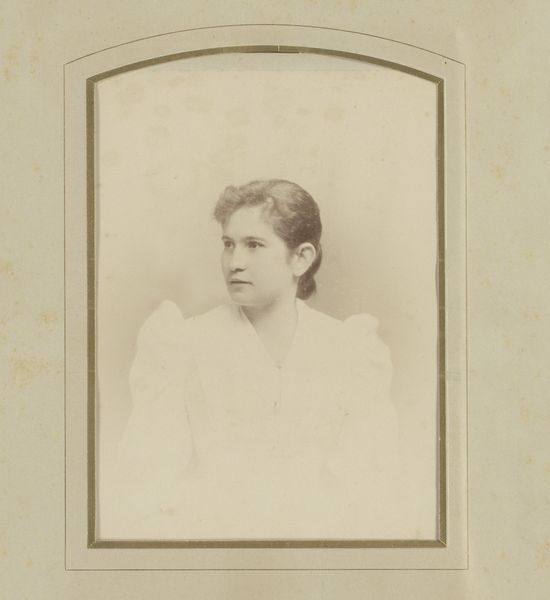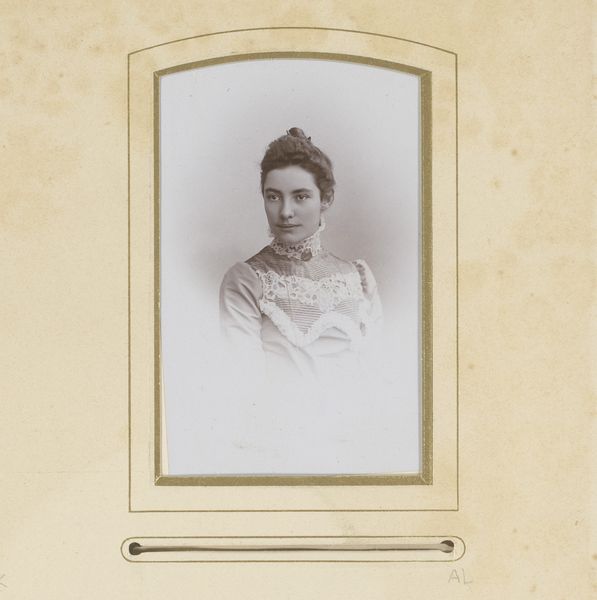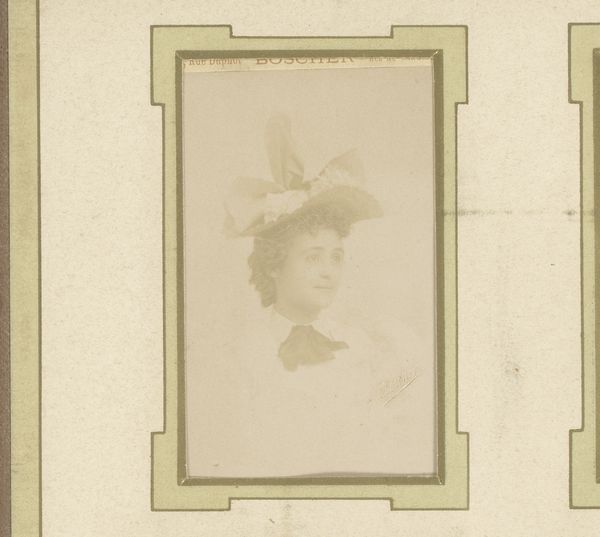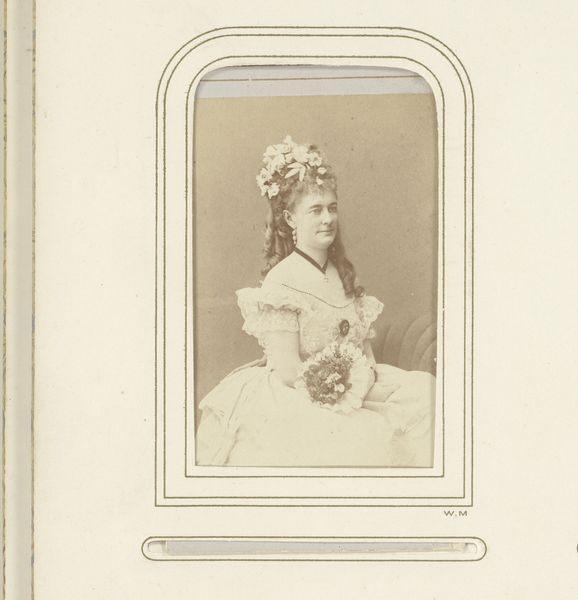
photography
#
portrait
#
charcoal drawing
#
photography
#
realism
Dimensions: height 84 mm, width 53 mm
Copyright: Rijks Museum: Open Domain
Curator: Here we have "Portret van een jonge vrouw" by P. Both, estimated to have been made between 1880 and 1920. It's a portrait captured using photography, showcasing a realism style. Editor: There’s a certain softness to it, almost dreamlike. The tones are delicate, like a faded memory, and the lace seems to melt into the background. Curator: Yes, that ethereal quality aligns with photographic trends of that era. Photography, even in portraiture, was trying to establish itself as more than just a document, striving for artistic legitimacy, mirroring the compositional styles popular in painting. Editor: Looking at the materiality, it is interesting to think about the entire photographic process at the time. Consider the equipment required and then also the development process that follows exposure to light, from studio to darkroom. What kind of labour was involved for someone like P. Both? Curator: Precisely, these portraits weren't just snapshots. They involved studio setups, careful posing, and a certain level of access afforded to some individuals, making portraiture of this nature somewhat of a status symbol. The material realities – the cost of photography, the specialized labor – definitely played a role in who was represented. Editor: The choice to present the subject in profile, and framed as if looking at a future unknown is evocative. Then also the ornate border enhances the sentimental nature of the photograph and feels deeply ingrained in that period’s consumption of imagery and sentimentality. Curator: That presentation underscores the socio-cultural dimensions as the subject isn't just a face, but a representation of ideals: beauty, respectability, and even aspirations of the time. The photographic studio also functioned as a space to perform roles, reflecting desired societal roles. Editor: Considering that photographic images at that time had to be carefully arranged and printed, that makes this portrait a deliberate object whose physical presence suggests more than just representational form. It signifies status and class. Curator: Absolutely, reflecting and solidifying specific social positions. Considering all the work and intention behind its creation, it gives us much to ponder about its existence as an enduring image from the late 19th and early 20th centuries. Editor: It prompts thoughts on how processes influence art and how class affected not only access to these techniques but also self-representation in visual mediums.
Comments
No comments
Be the first to comment and join the conversation on the ultimate creative platform.
